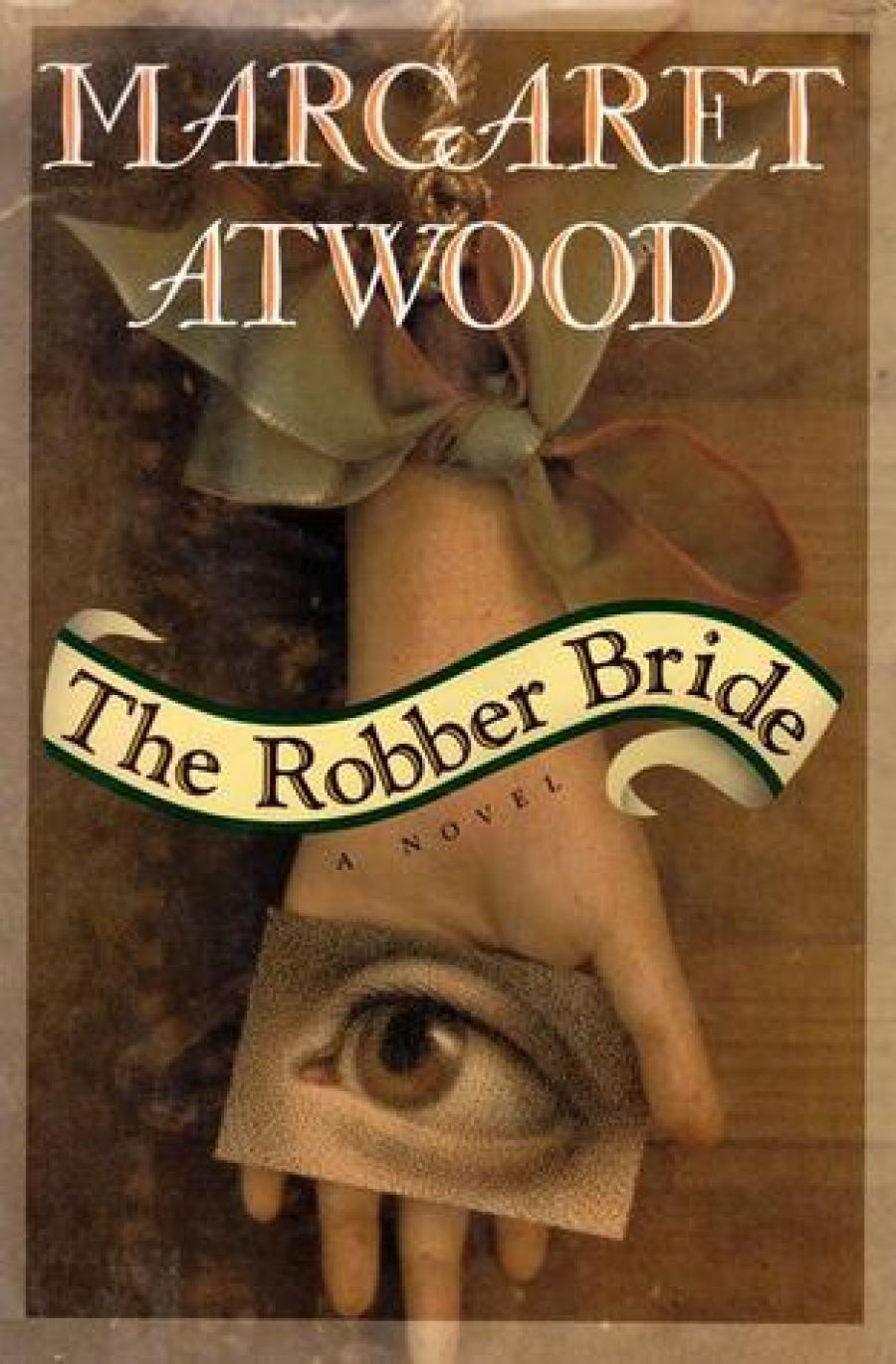
- Free Article: No
- Contents Category: Fiction
- Review Article: Yes
- Online Only: No
- Custom Highlight Text:
Ever since the publication of Margaret Atwood’s first novels, The Edible Woman and Surfacing, she has been seized upon as a writer who articulated the predicament of being female in contemporary western societies. Her Canadian origins were no barrier for many Australian women, who read her as though she spoke with their voice. Atwood was like a ‘sister’ who didn’t fail them – someone who’d been there and could help light the way.
- Book 1 Title: The Robber Bride
- Book 1 Biblio: Bloomsbury, $34.95 hb
- Book 1 Readings Link: booktopia.kh4ffx.net/5WPAD
They are not legendary, but are instead ordinary to the point that most of us wouldn’t want to identify. The challenge Atwood sets us is that she conveys their inner and outer lives with so much nuance, insight, irony, and texture that we have to empathise. There simply is no choice. Her novel is full of marvellous minutiae, vivid imagery, clever dialogue, and the characters’ own stream of consciousness as they justify their actions.
The women are first introduced having lunch at Toxique restaurant which is ‘not too expensive, and with a buzz, though it’s a little arch, a little grubby’. It’s here they can be slightly risqué, but they aren’t prepared to see their old foe, Zenia, returned from the dead and stride ‘past their table as if they aren’t there’. They’re completely unnerved and as usual she’s dressed provocatively. ‘She’s wearing black, a tight outfit with a scoop neck that shows the tops of her breasts. She looks, as always, like a photo, a high-fashion photo’.
The problem for Tony, Roz, and Charis is that they have no armour which is strong enough to withstand the onslaught of Zenia. Nothing in life has taught them about ‘evil’, and women who prey on other women to seduce and steal their husbands and lovers, and when they are through discard them shamelessly. But Atwood also makes it clear that it is something in the three women’s own split and dislocated selves that is attracted to the unconventional and amoral Zenia.
The women are dangerously naïve and willingly put aside their doubts. ‘How badly Roz has misjudged Zenia! Now she sees her in a new light. It’s a tempestuous light, a bleak light, a lonely, rainy light: in the midst of it Zenia struggles on, buffeted by men, blown by the winds of fate.’
As for the men in The Robber Bride, they are even more pitiful and hopeless victims of their own lust. Tony’s husband, West, follows Zenia like a puppy lapping at her heels, Roz’s husband comes home so vanquished he can hardly speak, and Charis’ lover is never seen again. (We are told these revelations at the beginning, so stating it here does not spoil the novel.)
Through Roz’s character, Atwood even asks, what is a good man today? ‘But it’s difficult, it’s almost impossible, because nobody seems to know any more what a good man is. Not even men.’ In the 470 pages of her novel there are no male role models, and the men depicted are but shadows of themselves.
Atwood weaves her tale in and out of the present, so that we flashback to the past and the women’s childhood, university student days, and their first encounters with Zenia. It’s a cleverly manipulated device, but sometimes the flashbacks are so discursive that you wonder if you’ll ever return to the present. Through all this, life is perilous, murky, risky, and treacherous and the women only just survive.
But there is a weakness in The Robber Bride in that Zenia’s character is never fully explained. She lives more fully in the other women’s imagination than she does in her own right. This may be a flaw, but it’s clearly what Atwood intended, and there may be no credible explanations for women like Zenia who embody our worst fears.
The novel itself is a fantastical journey although the ending when it comes seems a little too ordinary. Perhaps Margaret Atwood could have taken a leaf out of her own recent reworking of myths in her Good Bones, and given us something more metaphysical and extravagant to close her epic tale.


Comments powered by CComment